
French fashion designer Yves Saint Laurent holds the hands of German model Claudia Schiffer as Dutch model Karen Mulder (left) and Italian Carla Bruni (right) and other models behind, applaud following his Autumn/Winter 1996 high fashion collection, July 10, 1996.
ReutersAfter the sudden death of Dior’s founder Christian Dior in 1957, 21-year-old Yves Saint Laurent become the head designer of the House of Dior. His first collection Trapezium, which appeared a year later, played with the form of a traditional Russian sarafan. Some costumes were given Russian names – Nadezhda, Tatyana.
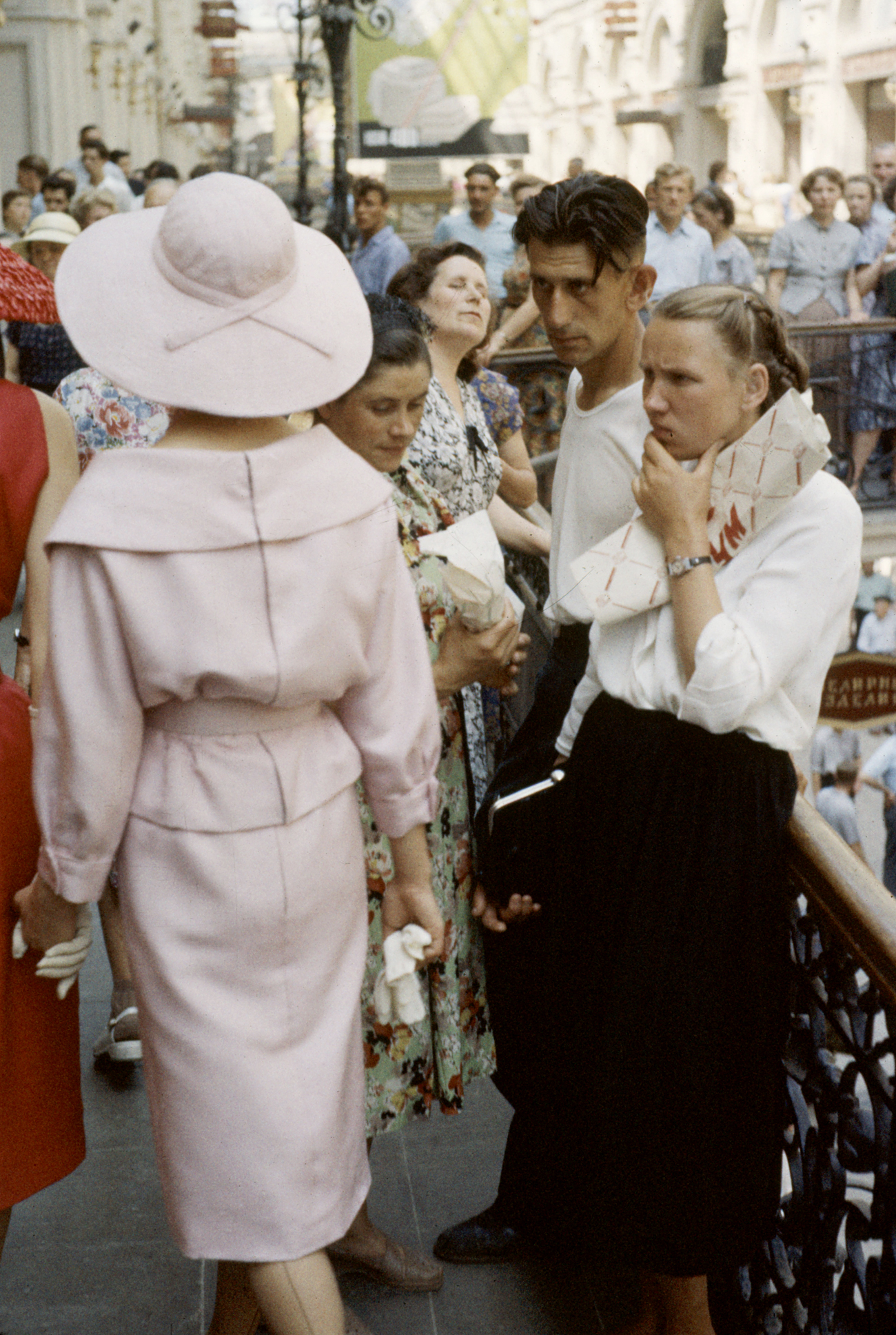 Dior models in Soviet Union for officially sanctioned fashion show attracting crowd of curious Russians, 1959. Source: Getty Images
Dior models in Soviet Union for officially sanctioned fashion show attracting crowd of curious Russians, 1959. Source: Getty Images
In 1959 Yves Saint Laurent became the first Western designer to bring his collection to the USSR. The show caused a furor. Of course it was nearly impossible to get in: Invitations were given only to chiefs of the light industry, cinema and theater stars and wives of the party leaders.
However, everyone had the opportunity to see the models later when they came out to the Red Square and the GUM’s (Russia’s main department store) halls for a photo session. The photo archives of the time capture the scene: The Russians look at the models in Dior dresses as if they are aliens.
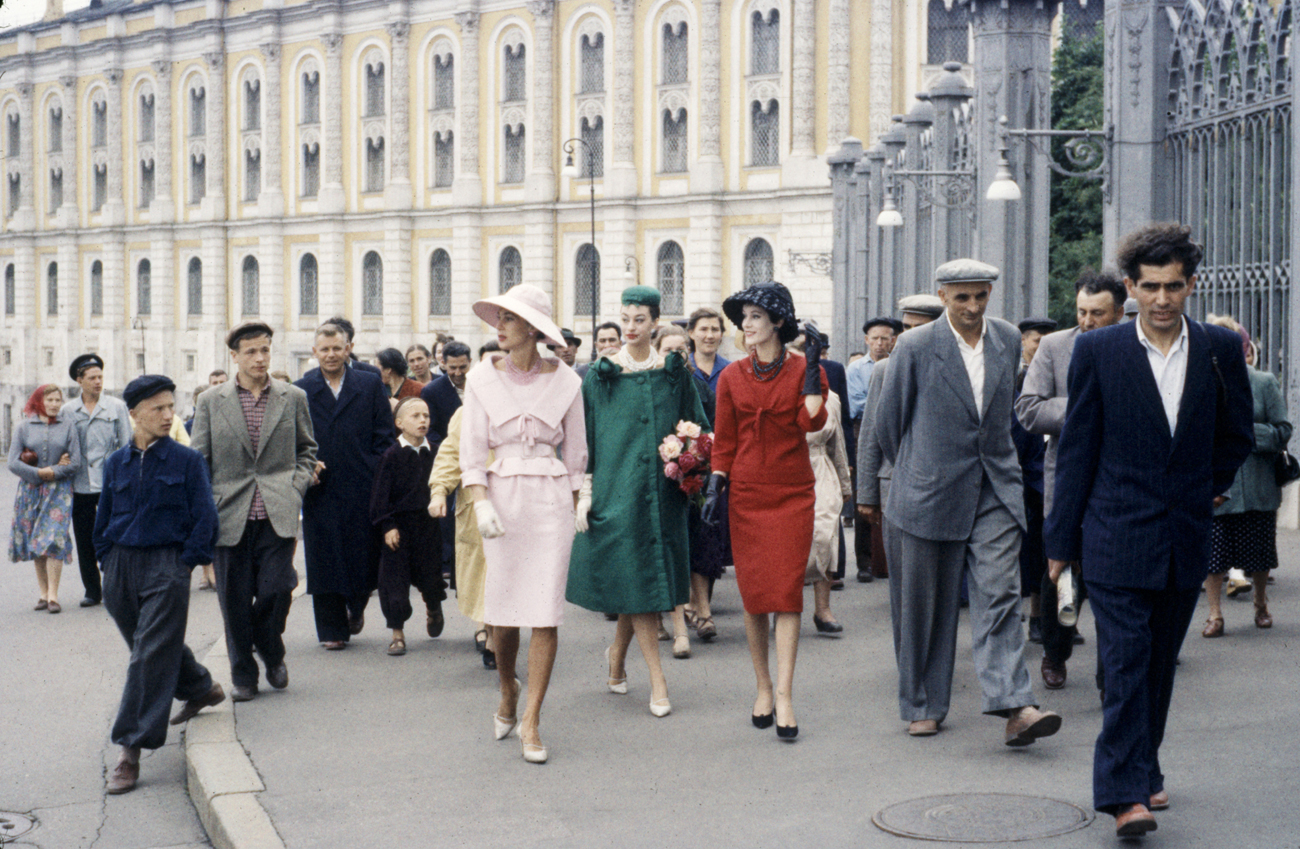 Dior models posing in Soviet Union for sanctioned fashion show walking the streets and getting reaction from locals. Moscow, 1959. Source: Getty Images
Dior models posing in Soviet Union for sanctioned fashion show walking the streets and getting reaction from locals. Moscow, 1959. Source: Getty Images
Ogoniok, one of the main magazines of the time, marked the show with a review:
“The audience watches the models with great attention: Some imagine trying on the dresses and slipping on the shoulders fur mantles, others try to remember an attractive pattern. The spectators note: ‘Why are the fur dresses so low-necked? That’s nearly a sundress. For northerners like us that isn’t really practical. And in summer it’ll be too hot in such a dress, even in the evening. The dresses are a little bit too short. That won’t be beautiful on short or plump women. The hand-made embroidery on tulle is without doubt very beautiful, but who can afford such an expensive dress?’”
The designer stated that he loved Russia and its culture, the influence of which is notable in many of his works. However never did it manifest itself as obviously as in his fall-winter collection 1976, devoted to Diaghilev’s “Ballets Russes,” which ran in the early years of the 20th century in the theaters of Paris and New York. The heroines of Russian literature, mainly Natasha Rostova and Anna Karenina, also inspired the designer.
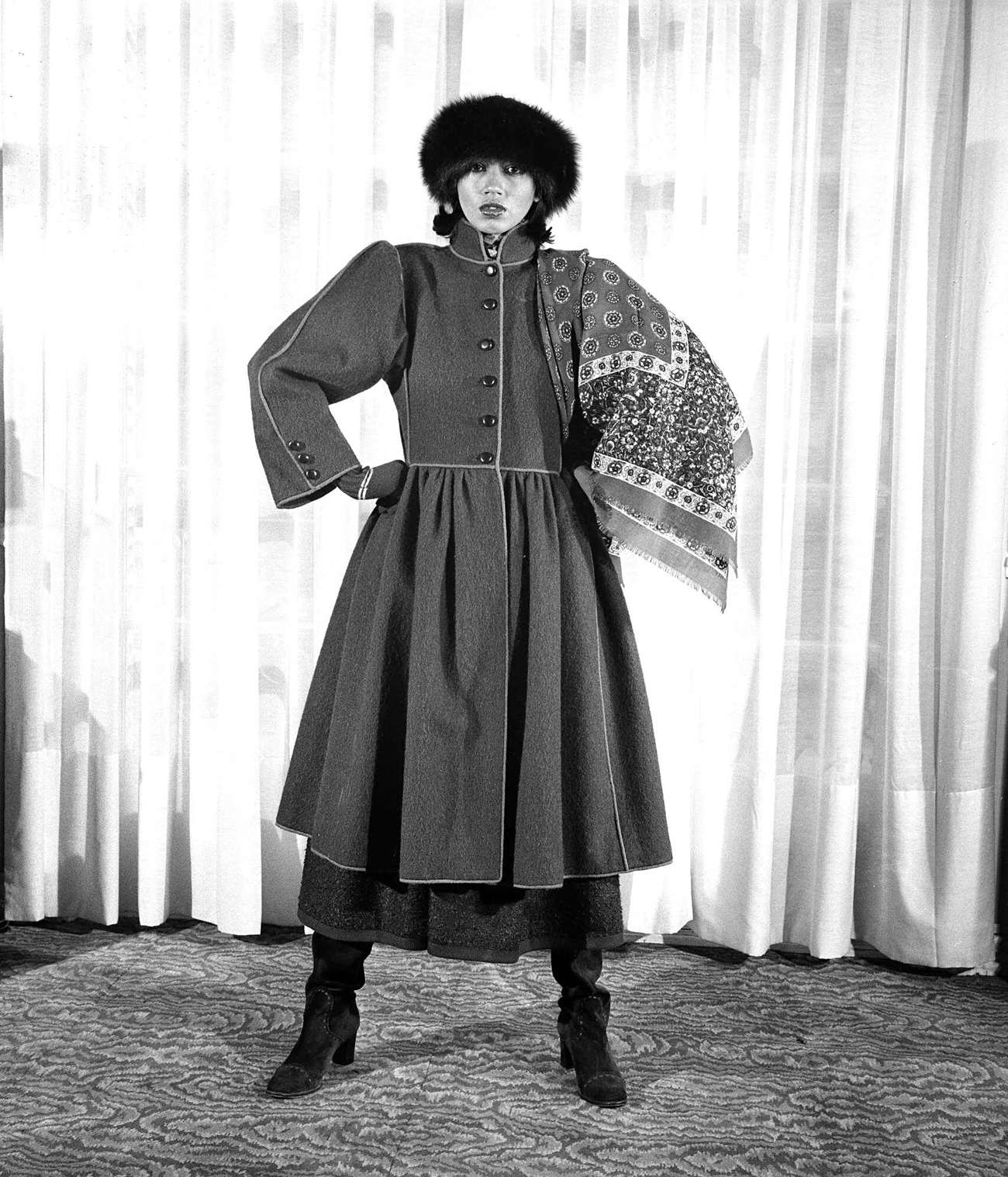 This Russian-style green homespun coat is from the 1976-77 winter collection of Paris couturier Yves Saint-Laurent. The coat is edges with red and worn over a brown wool skirt. Completing the outfit is a printed shawl and a cossack fox toque. Source: AP
This Russian-style green homespun coat is from the 1976-77 winter collection of Paris couturier Yves Saint-Laurent. The coat is edges with red and worn over a brown wool skirt. Completing the outfit is a printed shawl and a cossack fox toque. Source: AP
The garments drew from Russia’s Cossack warrior uniform, traditional Russian peasant wear and modernist Leon Bakst's ballet costumes. The collection was received enthusiastically; The New York Times described it as “revolutionary,” able to “change the course of fashion in the world.” Saint Laurent himself commented on it this way: “I don’t know if this is my best collection. But it is my most beautiful collection.”
Lilya Brik, who is most famous for her ardent love affair with Russian poet Vladimir Mayakovsky, was considered to be a woman ahead of her time. Though not a beauty, she had some kind of magical influence on men. Many outstanding artists, writes and poets of the early 20th century saw her as their muse, hence her nickname “the muse of the Russian avant-garde.”
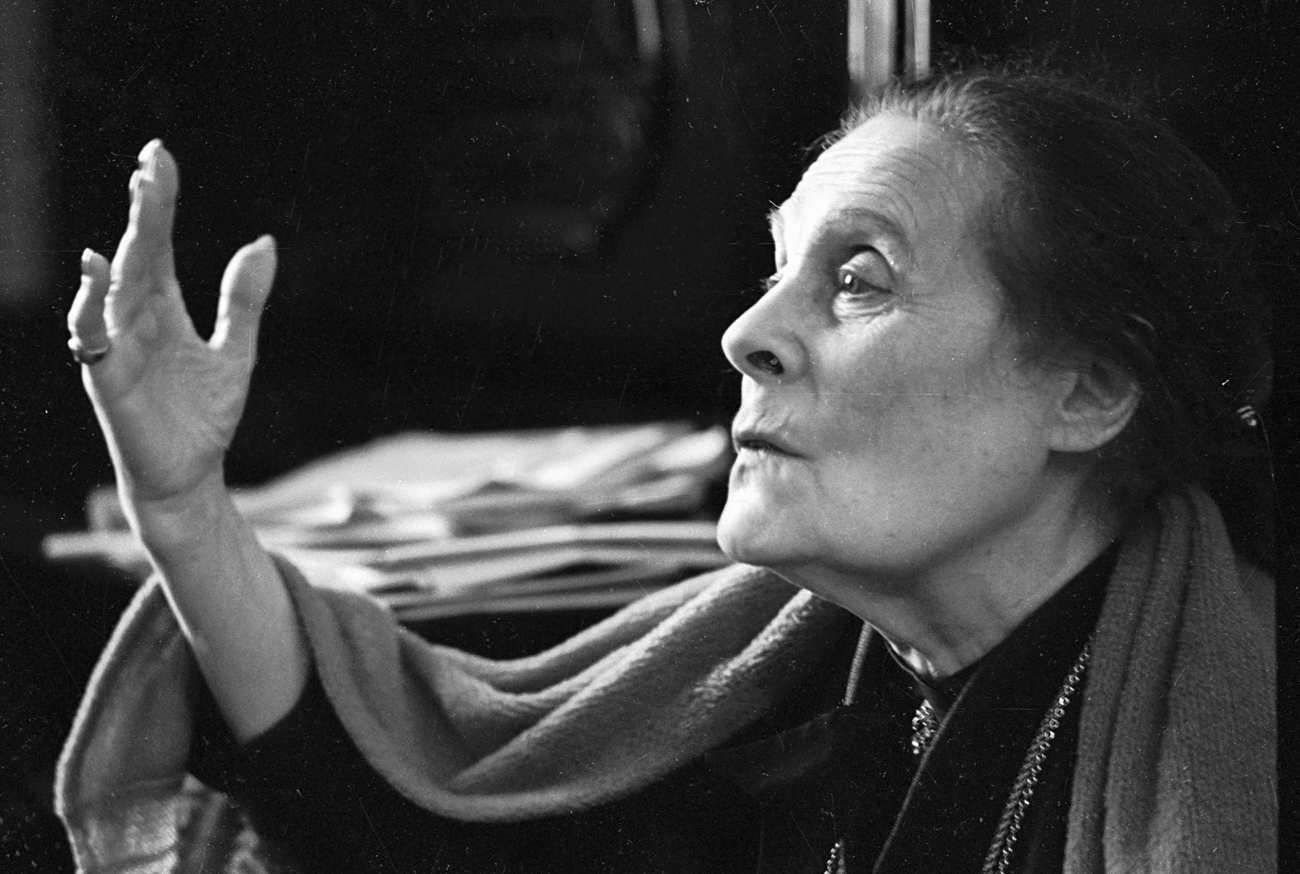 Lilya Brik. Source: Mikhail Ozerskiy/RIA Novosti
Lilya Brik. Source: Mikhail Ozerskiy/RIA Novosti
Yves Saint Laurent met her by chance at the airport in Moscow when Brik was already more than 80 years old. Later the designer’s best friend and partner Pierre Bergé remembered that moment: “A dashing red-haired woman wearing a fur coat with fluttering skirts passed by…”
Saint Laurent found one of the most interesting interlocutors in her: “I could freely speak about everything with her – about love affairs, honesty, painting, even about politics… And of cause about fashion,” he said.
The designer gave her many of his costumes as presents; on her 85th birthday he gave her an evening dress, which she loved very much and wore often, regardless of etiquette, which prohibited the wearing of the same dress on more than one occasion.
It was the writer Elsa Triolet, Louis Aragon’s wife and the sister of Lilya Brik, who introduced fashion trends and designers to the legendary Russian ballet dancer Maya Plisetskaya. Yves Saint Laurent couldn’t help admiring the world-renowned ballerina. The designer created her costume for the Mahler ballet Death of the Rose.
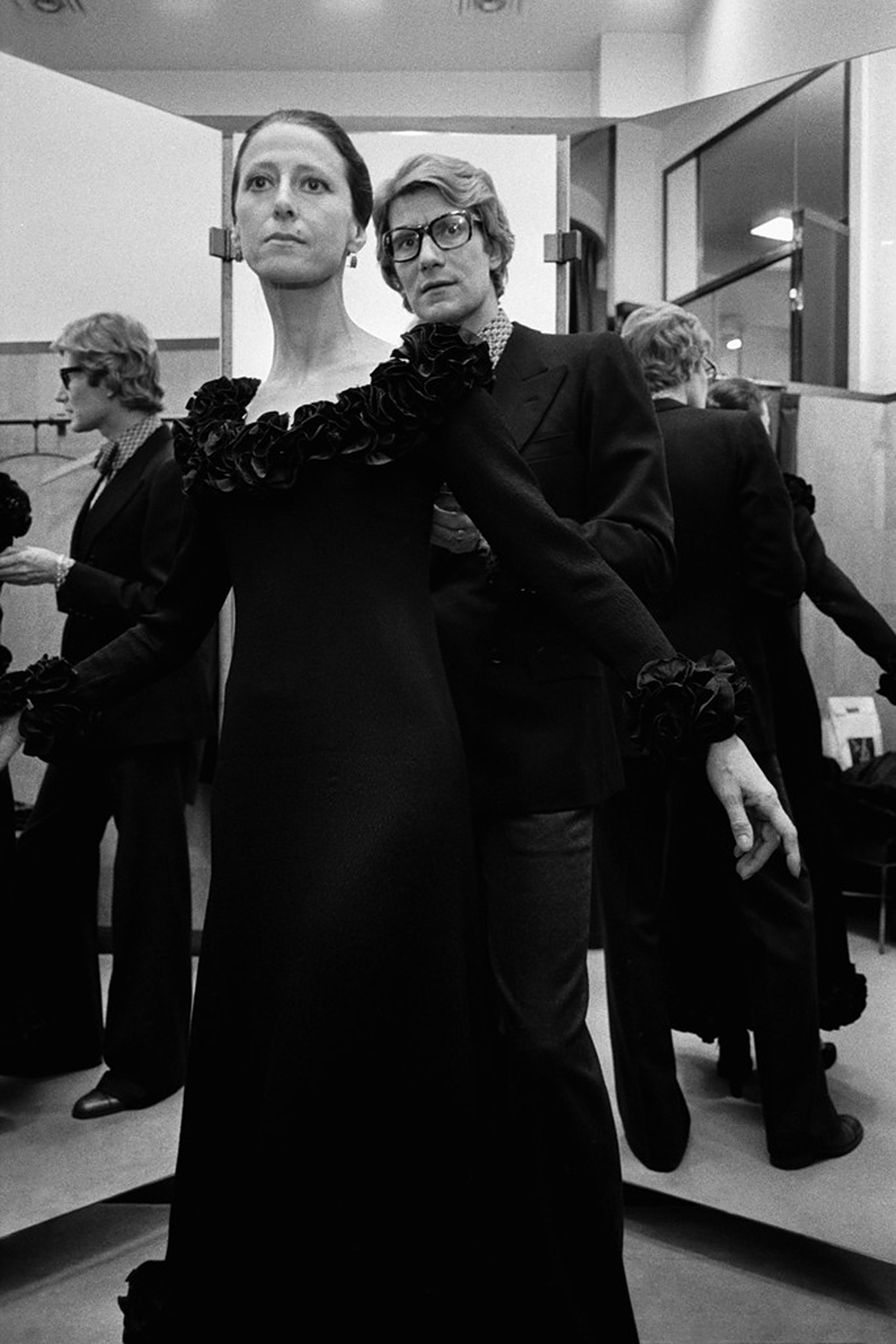 French fashion designer Yves Saint Laurent with Russian ballet dancer Maya Plisetskaya, February 2, 1971. Source: Corbis/Vostock-Photo
French fashion designer Yves Saint Laurent with Russian ballet dancer Maya Plisetskaya, February 2, 1971. Source: Corbis/Vostock-Photo
The weightless, delicate pink garment, which seemed to have been sewn from rose-petals and didn’t hamper Plisetskaya’s movements at all, was a real shock for the whole wardrobe department of the Bolshoi Theater and suited very well the sensual, dramatic and innovatory spirit of the performance.
In 2008 the designer who transformed the fashion world died. However the fashion house that bears his name is still devoted to his passion for Russia and continues to release models inspired by this country from time to time.
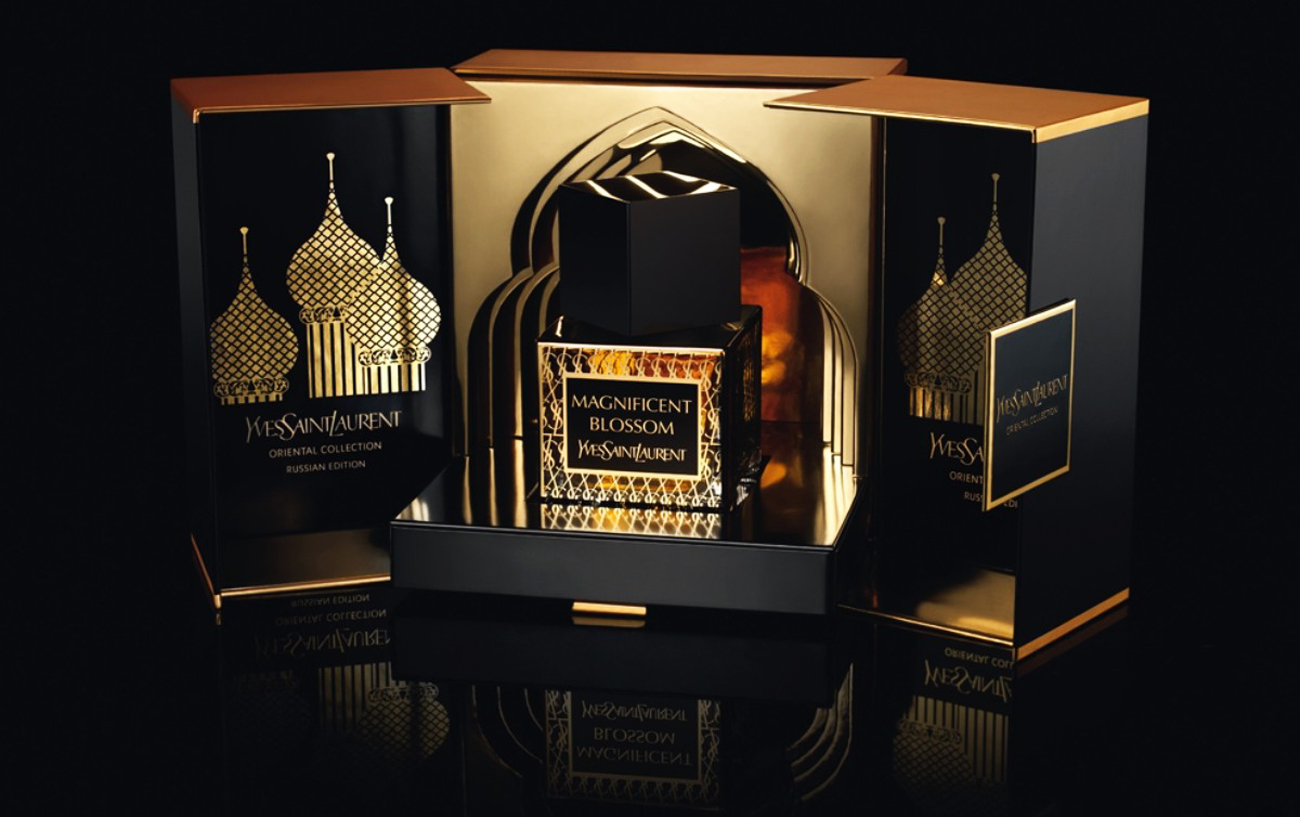 Source: Press photo
Source: Press photo
The Magnificent Blossom Oriental Collection 2015 Russian Limited Edition fragrance was designed specially for Russia, and in 2014 a cheerful eye shadow palette devoted to Yves Saint Laurent’s ever-lasting love – Russian ballet – was launched.
All rights reserved by Rossiyskaya Gazeta.
Subscribe
to our newsletter!
Get the week's best stories straight to your inbox